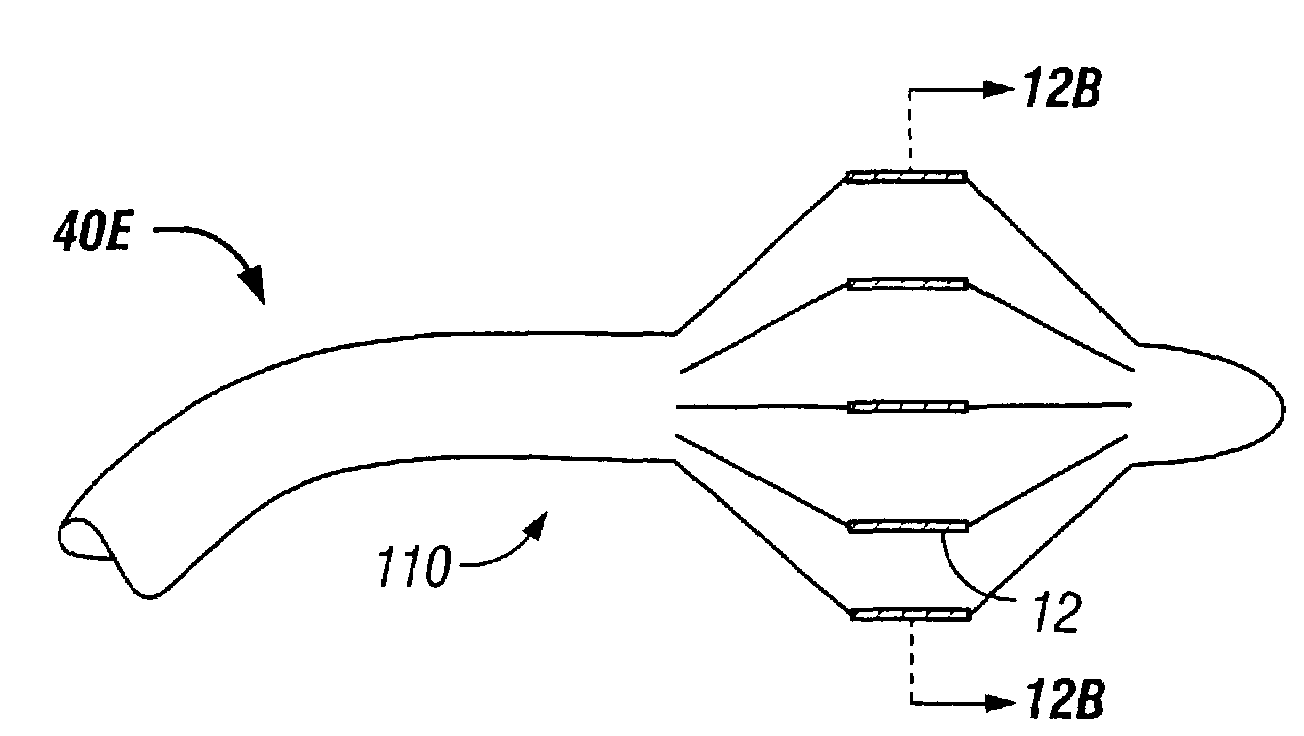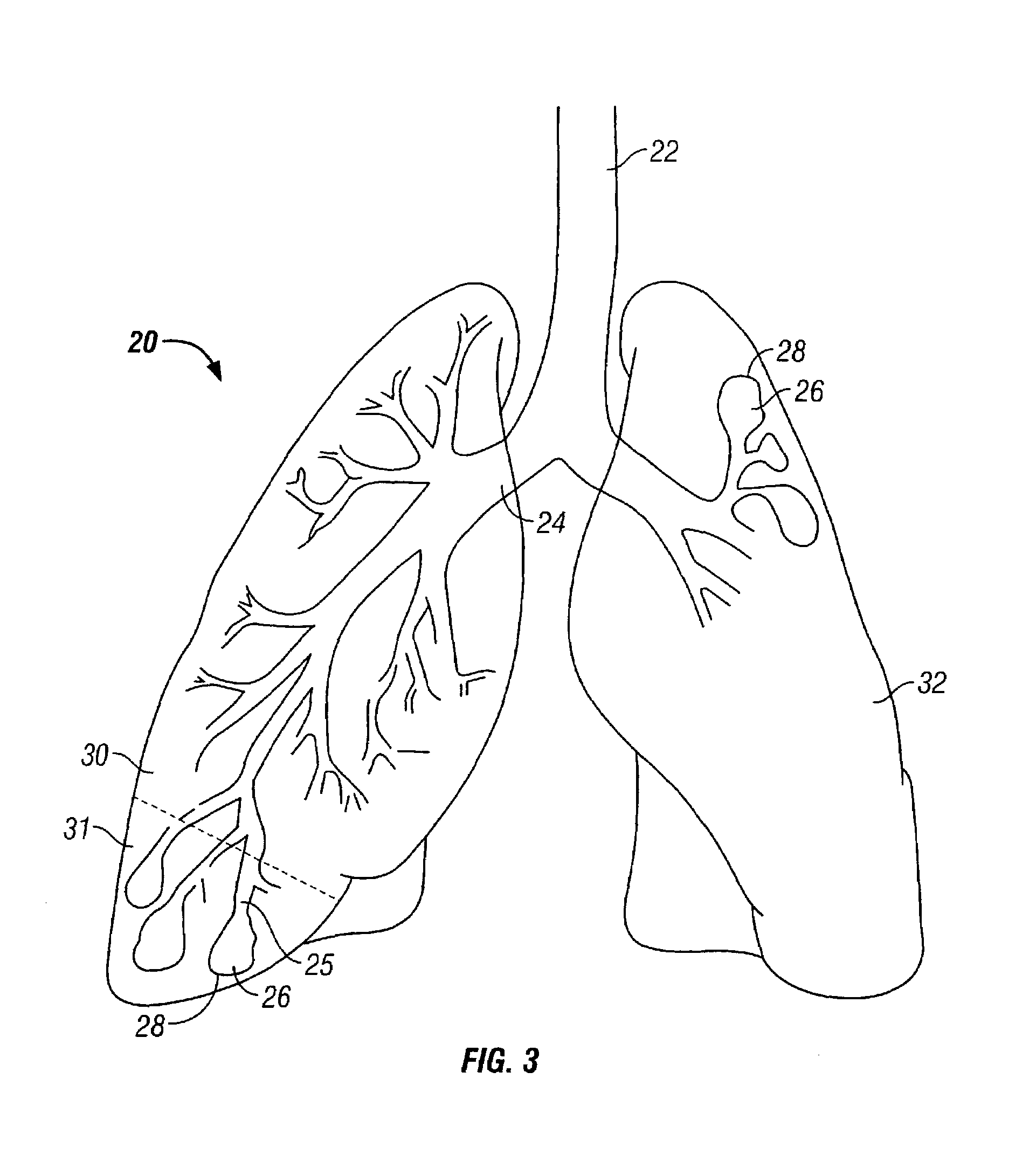Method of increasing gas exchange of a lung
a technology of gas exchange and lung, which is applied in the field of lung disease treatment, can solve the problems of reducing the capacity and efficiency of the lung, so as to achieve the effect of improving the strength of the airway
- Summary
- Abstract
- Description
- Claims
- Application Information
AI Technical Summary
Benefits of technology
Problems solved by technology
Method used
Image
Examples
Embodiment Construction
[0093]In the following description, like reference numerals refer to like parts.
[0094]FIG. 3 illustrates human lungs 20 having a left lung 30 and a right lung 32. A diseased portion 31 is located at the lower portion or base of the left lung 30 (indicated by the volume of the lung below the dashed line on the left lung). In some cases, the diseased portions of an unhealthy lung are not generally located in discrete areas. That is, the diseased portions may not be distributed heterogeneously, and are more homogeneous.
[0095]As illustrated in FIG. 3, the trachea 22 extends down from the larynx and conveys air to and from the lungs. The trachea 22 divides into right and left main bronchi 24, which in turn form lobar, segmental, and sub-segmental bronchi or bronchial passageways. Eventually, the bronchial tree extends to the terminal bronchiole. At the terminal bronchiole, alveolar sacs 26 contain alveoli 28 that perform gas exchange as humans inhale and exhale.
[0096]FIG. 4 illustrates a...
PUM
 Login to View More
Login to View More Abstract
Description
Claims
Application Information
 Login to View More
Login to View More - R&D
- Intellectual Property
- Life Sciences
- Materials
- Tech Scout
- Unparalleled Data Quality
- Higher Quality Content
- 60% Fewer Hallucinations
Browse by: Latest US Patents, China's latest patents, Technical Efficacy Thesaurus, Application Domain, Technology Topic, Popular Technical Reports.
© 2025 PatSnap. All rights reserved.Legal|Privacy policy|Modern Slavery Act Transparency Statement|Sitemap|About US| Contact US: help@patsnap.com



